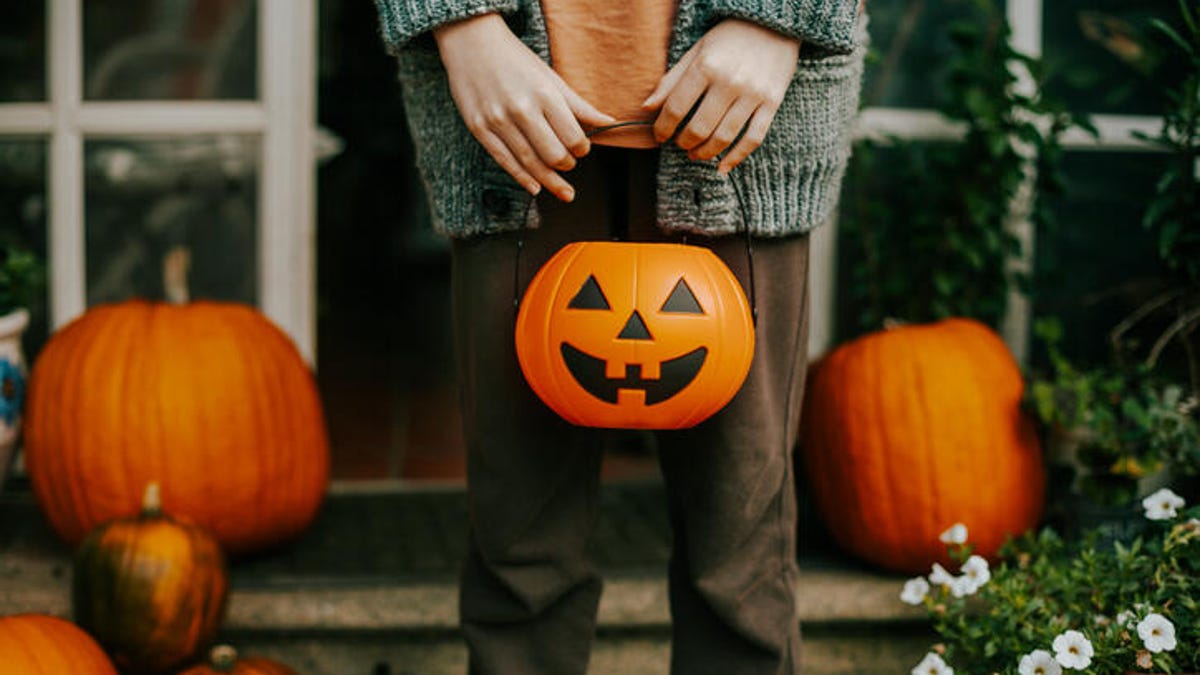Halloween and COVID-19: Trick-or-treating and what the CDC says is too risky
Halloween is going to look different this year.

How to stay safe this year during Halloween.
Celebrating Halloween is going to be different this year, thanks to the COVID-19 pandemic. While the Halloween and fall season come with fun and festive traditions like trick-or-treating and haunted houses, it's important to remember that many (if not most) of these activities come with the risk of spreading or contracting the coronavirus.
Given that Halloween isn't canceled altogether (at least, depending on where you live), you can still celebrate in safe ways. But you will have to be a bit creative and flexible compared to what you may be used to.
Keep in mind that the key to staying safe and reducing risk means wearing a mask, avoiding gathering with people who don't live with you, avoiding indoor gatherings and only participating in outdoor activities in which social distancing is easily maintained.
The Centers for Disease Control and Prevention released guidelines with helpful tips for staying safe this fall and Halloween. Keep reading below for which festive activities are considered higher risk and should be avoided, and which are considered less risky according to the CDC and the American Academy of Pediatrics.
Be sure to wear a proper face mask with your Halloween costume.
High-risk activities to avoid this Halloween
The CDC cites the following activities as higher risk for spreading COVID-19 and recommends avoiding them:
- Participating in traditional trick-or-treating where treats are handed to children who go door to door
- Participating in trunk-or-treating, where treats are handed out from trunks of cars lined up
- Attending costume parties held indoors
- Going to an indoor haunted house where people may be crowded together and screaming
- Going on hayrides or tractor rides with people who are not in your household
- Using alcohol or drugs, which can cloud judgement and increase risky behaviors
- Traveling to a rural fall festival that is not in your community, especially if you live in an area with high community spread of COVID-19
Traditional trick-or-treating is not recommended this year since it usually involves coming into close contact with others who may or may not be wearing a mask. For this reason, the CDC recommends a one-way trick-or-treating setup in which treat bags are left out at the end of a driveway or yard. This way kids can pick up treats without coming into contact with people outside of their household.
The CDC also recommends that parents wipe down the outside of any packages for treats before giving them to kids to enjoy. Remember to check your state and local guidelines surrounding Halloween activities, since some areas may be limiting gatherings and activities beyond what the CDC has mentioned. In Los Angeles County, for example, gatherings and events of any kind are not permitted under a health order.
Lower risk Halloween activities
Even though regular trick-or-treating and indoor Halloween parties are off the table, there are still ways to get festive and have some fun in a safe way this year. You can throw a virtual Halloween party over Zoom, or watch a spooky movie with friends on Netflix Party.
Some lower-risk activities the CDC recommends include:
- Having a small-group, outdoor, open-air costume parade where people can maintain a distance of six feet from others
- Attending a costume party held outdoors where protective masks are used and people can remain more than six feet apart
- Going to an open-air, one-way, walk-through haunted forest where appropriate mask use is enforced, and people can remain more than six feet apart
- If screaming will likely occur, greater distancing is advised. The greater the distance, the lower the risk of spreading a respiratory virus
- Visiting pumpkin patches or orchards where people use hand sanitizer before touching pumpkins or picking apples, wearing masks is encouraged or enforced, and people are able to maintain social distancing
- Having an outdoor Halloween movie night with local family or friends, with people spaced at least six feet apart
- If screaming will likely occur, greater distancing is advised. The greater the distance, the lower the risk of spreading a respiratory virus
Finally, the CDC and the American Pediatrics Academy emphasize that Halloween costumes that cover the face should not be considered a proper face covering unless the covering contains several layers of fabric, is breathable, and covers the nose and mouth snugly. If you or your child are wearing a costume, you should also plan to wear a mask whenever you are around others. Also, to avoid breathing issues, don't wear a costume mask over a cloth mask.
Read more: Where to buy face masks for kids

